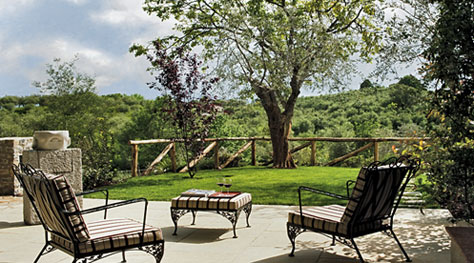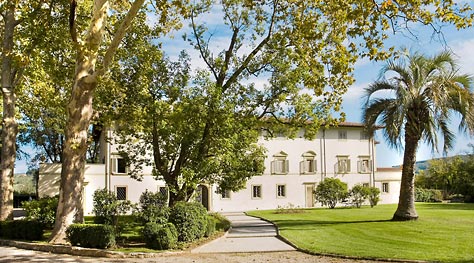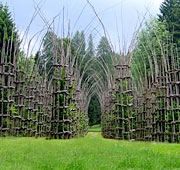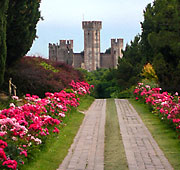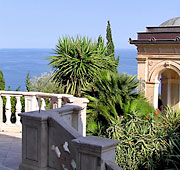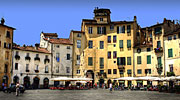Queen Camelia
A trip to Tuscany and the historic gardens of Villa Reale di Marlia.
Just ten kilometers away from Lucca, on the road which leads to Abetone, Villa Reale di Marlia recently whole renewed is one of Tuscany's most splendid historic houses, with gardens to match.
The 9 hectare garden offers a fascinating insight into the history of landscape design: from 17th century Baroque to 18th century Neoclassical and 20th century Decò.
Villa Reale of Marlia
Enjoy the elegance of one of Italy's most important historic estates.
Get your tickets now!
Blue-blooded bolt-hole
More than worthy of its name, Reale ('royal' in Italian), the villa and its gardens have been graced by the presence of crowned heads of state for centuries.
William and Kate, who stayed at the property for a few days at the end of their honeymoon, have expressed their desire to return to this Tuscan idyll in the near future.
In the 16th century the villa served as the sumptuous summer residence of the bishops of Lucca, before passing into the hands of the Orsetti, the family responsible for the creation of the baroque gardens, complete with open air theater, pescheria, grotto and lemon garden.
From Empire to Decò
At the start of the 19th century, Napoleon's sister, Elisa Baciocchi, made Villa Reale at Marlia her summer home and transformed the villa and surrounding properties into an elegant Empire style ensemble. Whilst maintaining the original 17th century features of the grounds, the, then, sovereign of Lucca added various elements typical of the English garden, such as the extensive lawns and the lake near to the Bishop's Villa.
After the fall of Napoleon, the villa passed, first into the hands of the Savoy, and subsequently, into those of the Counts Pecci-Blunt, who commissioned the eminent French architect, Jaques Greber, to restore and replant the park and create a new, Decò style, Spanish garden.
Theaters, water and lemons
The entrance to Villa di Marlia gives an indication of the magic of Lucchesia, the part of Tuscany which extends from Lucca to as far as the Apennines, which awaits within its walls.
The highest part of the park is also the oldest. This is where the 'green theater', preceded by an atrium adorned with beautiful ornamental fountain, can be seen.
The theater, a circular room with tall yew espaliers, was created in 1652. The statues of Pantalone, Balanzone and Colombina are 18th century additions.
Another 17th century work, the 'water theater', situated to the rear of the villa, features a large semicircular pool, gigantic masks and statues of pagan divinities.
A typically Tuscan element, the villa's lemon garden, is home to numerous examples of the sweetly scented citrus tree, contained in immense terracotta vases.
In the vicinity of the Bishop's villa there is a grotto, known as the Cove of Pan, linked by way of a two ladder ramps to the deco style flower garden, realized in the 1920s.
The Islamic inspired, 'Spanish' garden features geometric flowerbeds and culminates in a large pool from which numerous channels originate.
Tuscan camellias: villas and villages in bloom
The microclimate of this part of Tuscany makes it particularly suitable for the cultivation of camellias. The Villa Reale garden boasts numerous varieties of the oriental shrub dating back to the 19th century.
More of the delicate, exotic, blooms of the camellia can be seen every March, in the area around Capannori (the so-called "Compitese"), where the "Antiche Camelia di Lucchesia" is held. This much awaited event includes a tour of the historic gardens in which rare species of camellia grow.
The itinerary includes visits to the pretty little towns of Pieve and S.Andrea di Compito, to Italy's first plantation of tea camellias, at the Antica Chiusa Borrini.
Not to be missed, the walk along the Sentiero delle Camelie: a two hour stroll designed to introduce visitors to some of the most beautiful varieties of the flower.
Starting from July 2020, the interiors of the Royal Villa are open and visitors can admire the apartments of Napoleon's sister. A museum dedicated to the bizarre collections of Countess Mimì Pecci Blunt, a central cultural figure for Italy and America from the last century, can also be visited in the adjacent Palazzina dell'Orologio. Both interiors had never been open to the public before.
Put it in your diary... or on your smartphone
Villa Reale di Marlia
Località Villa Reale Marlia - 55014 Lucca
Tel: +39 0583.3010801 March – 06 November
Park Opening hours: daily from 10:00 until 6:00 p.m.
Last admission 30 minutes before closing time. Dogs on leash are welcome in the park.Villa and Palazzina dell'Orologio opening hours: daily from 10:30 to 5:30 p.m.
Last admission 30 minutes before closing time.
Nature
Main destinations
Hotels in the area
- Useful links
- Tuscany
- Lucca Hotels
- Tuscany (all hotels)


